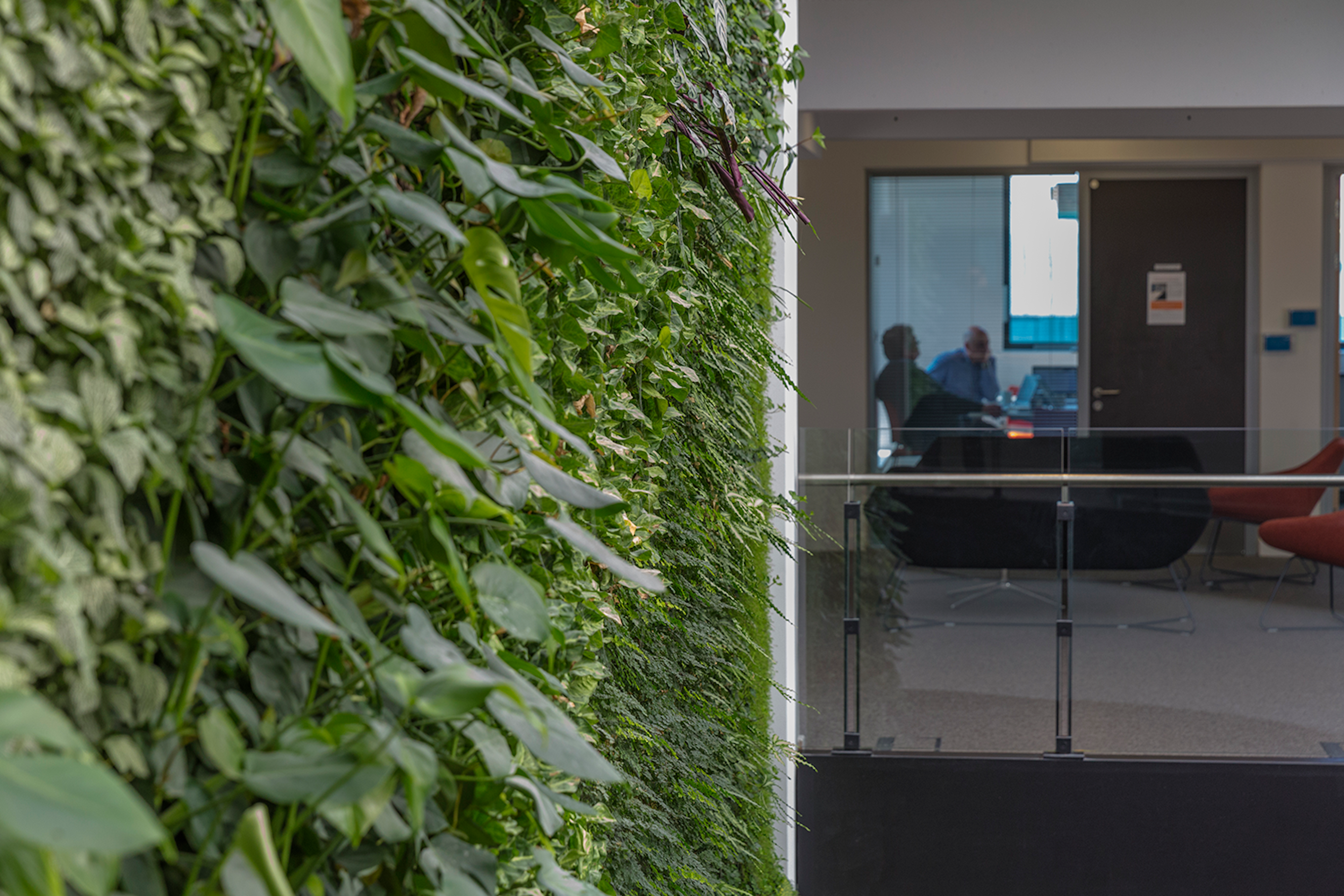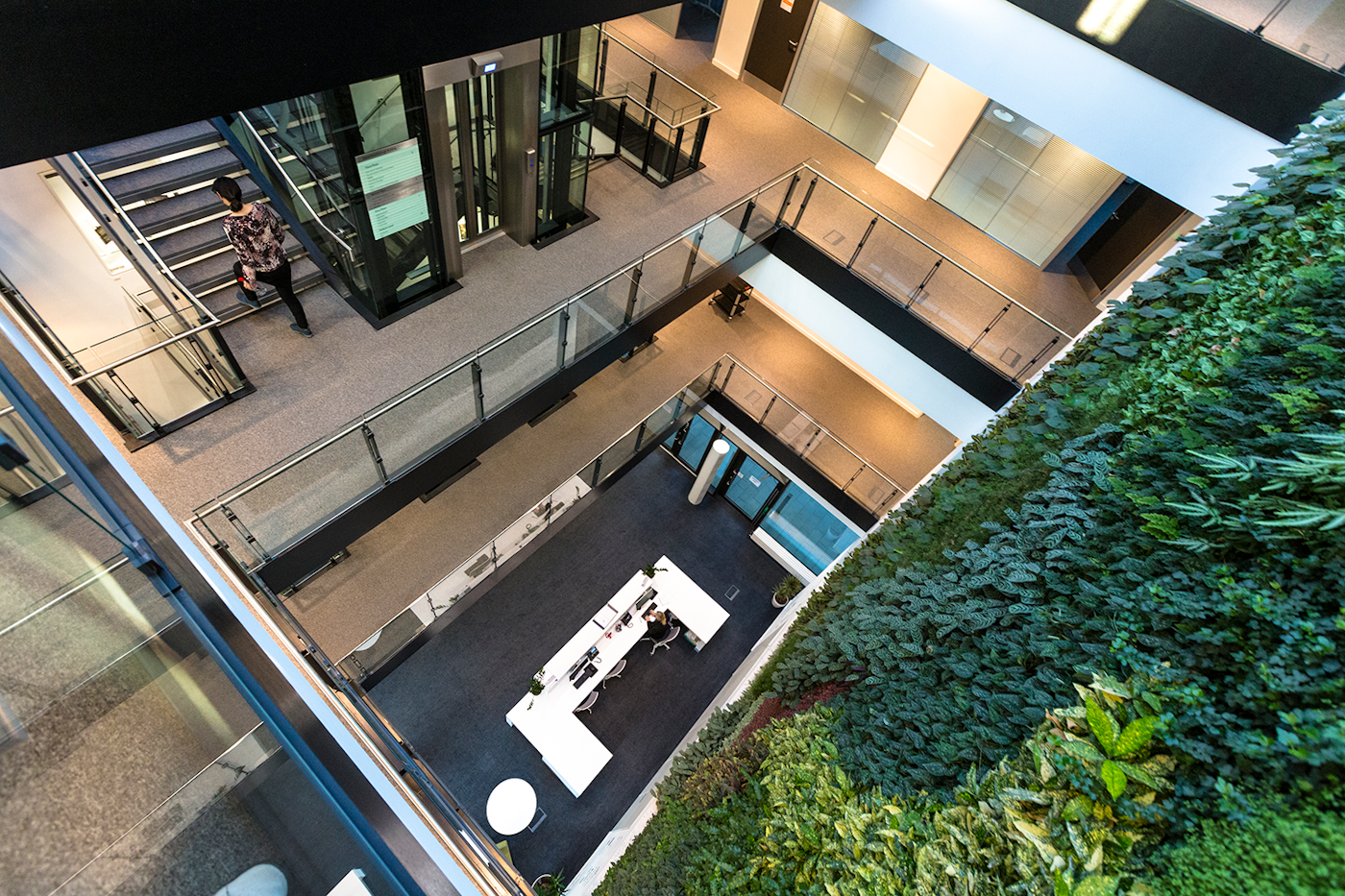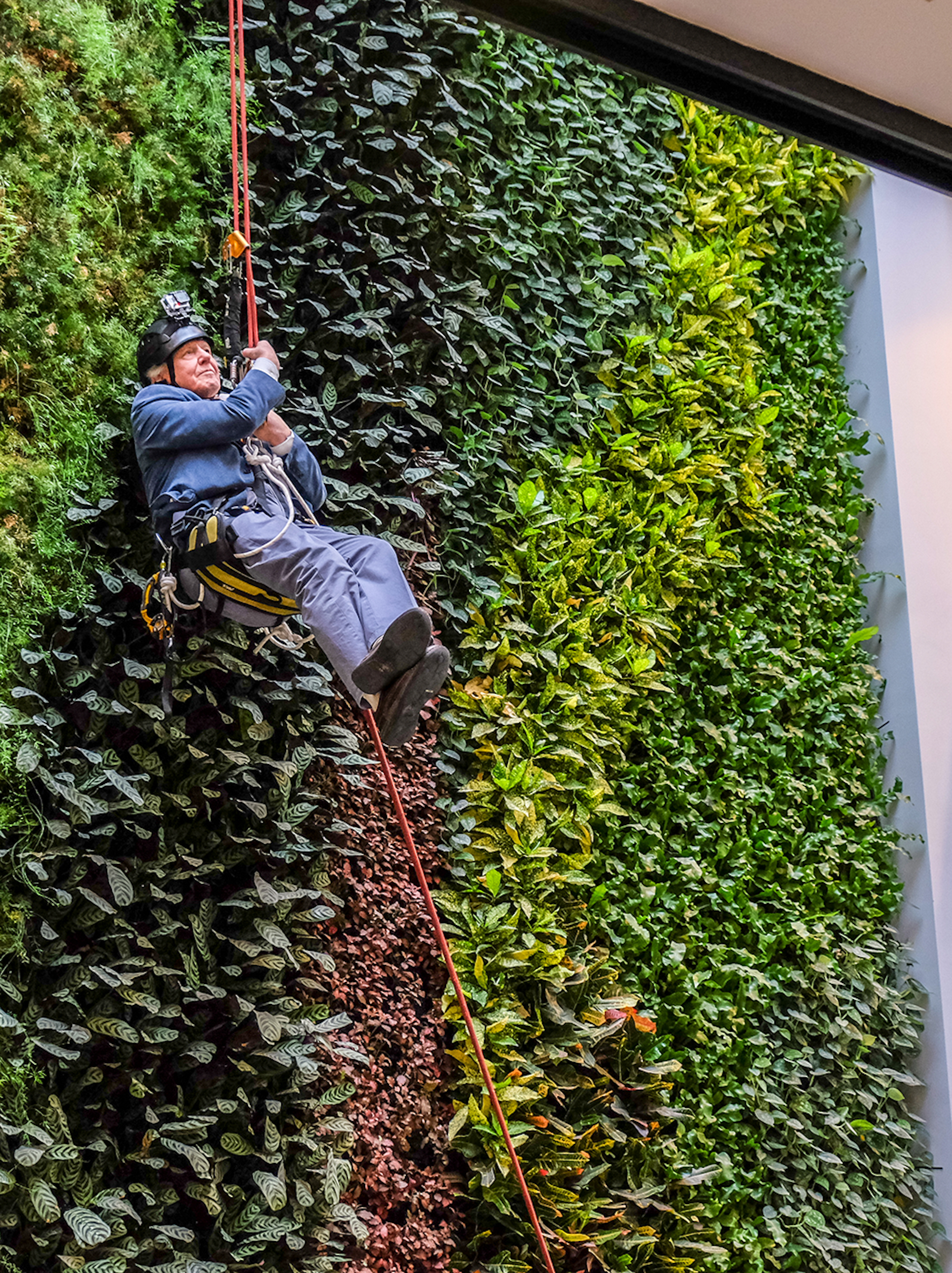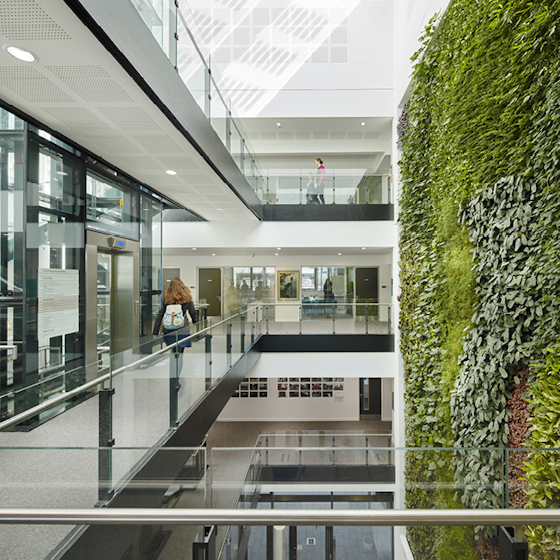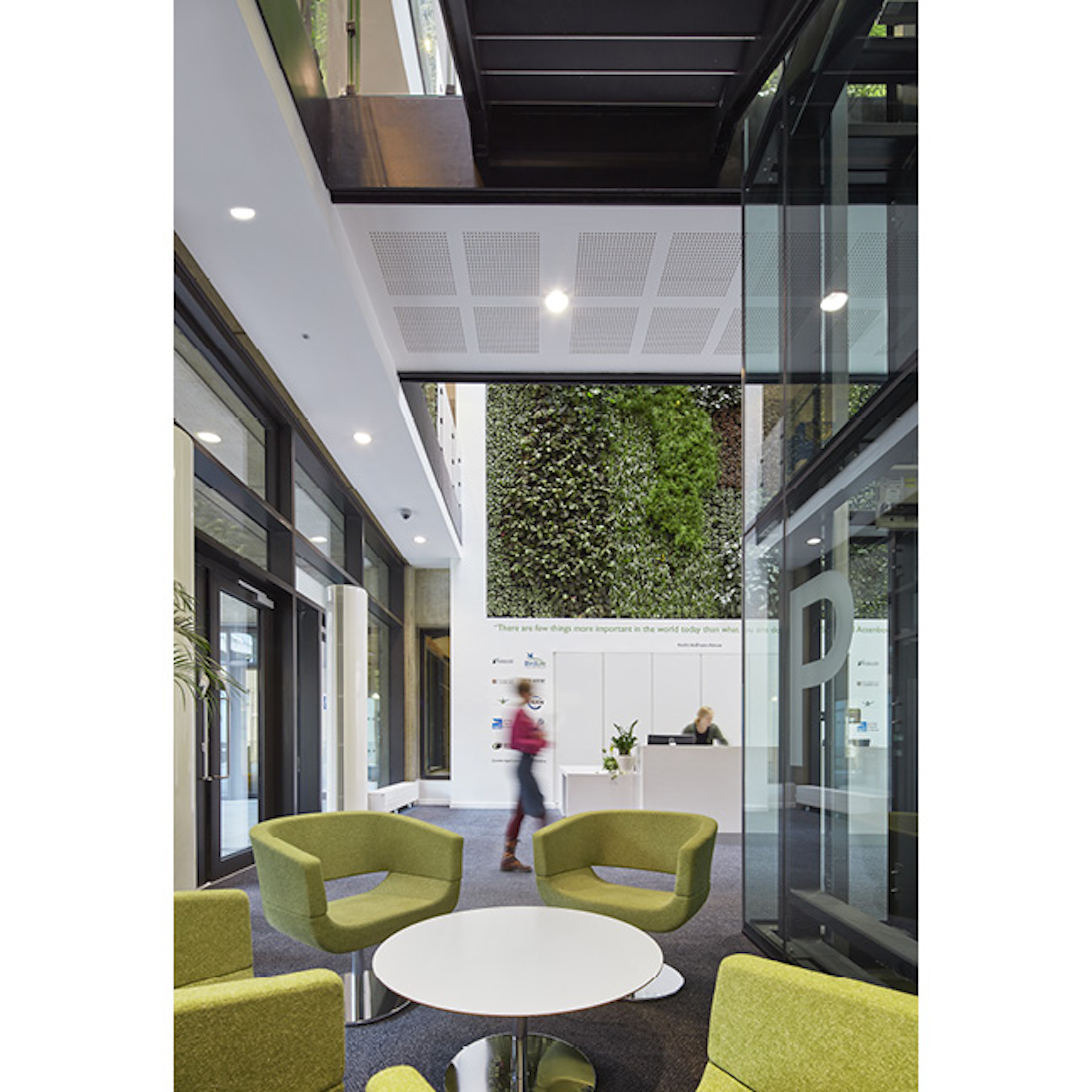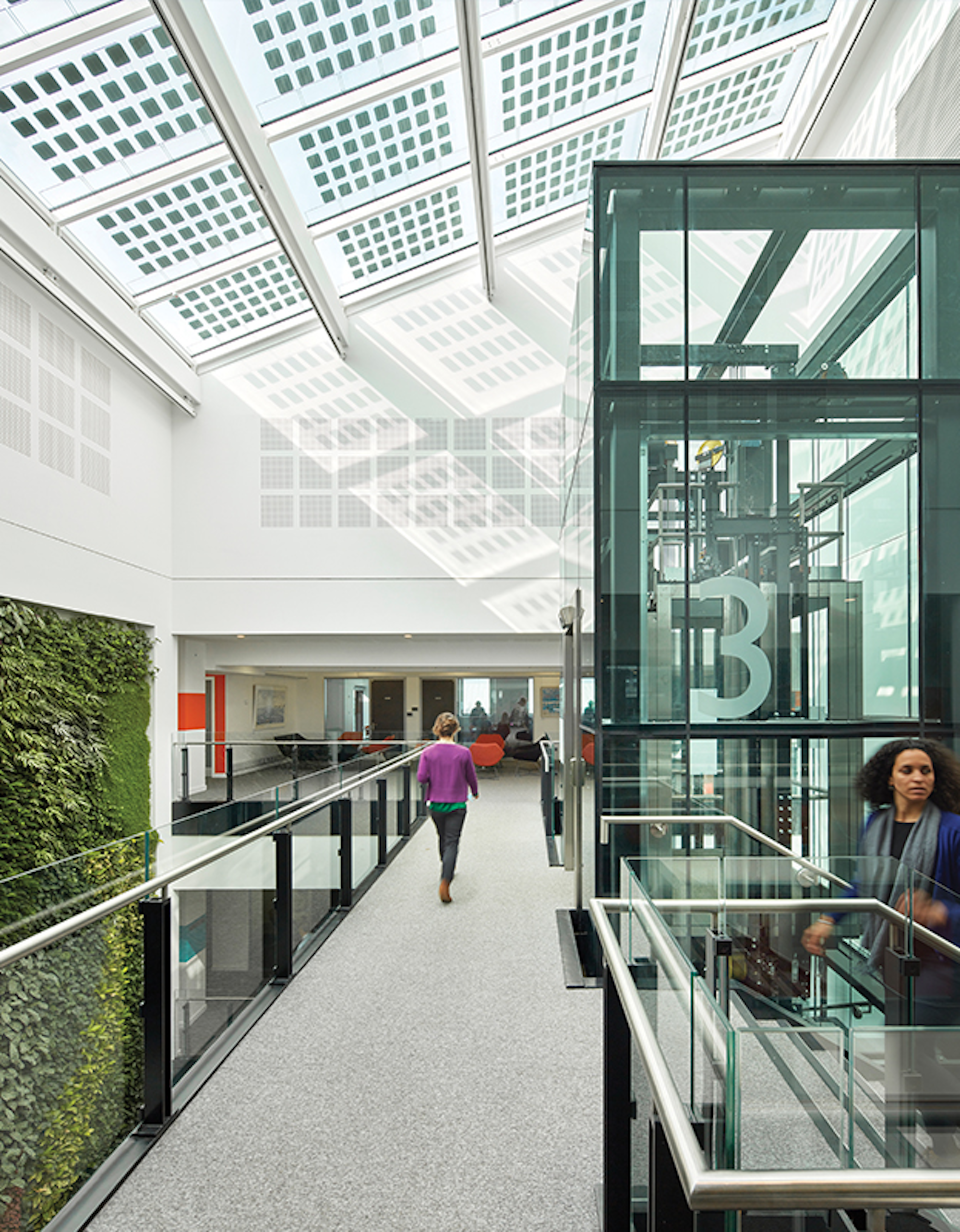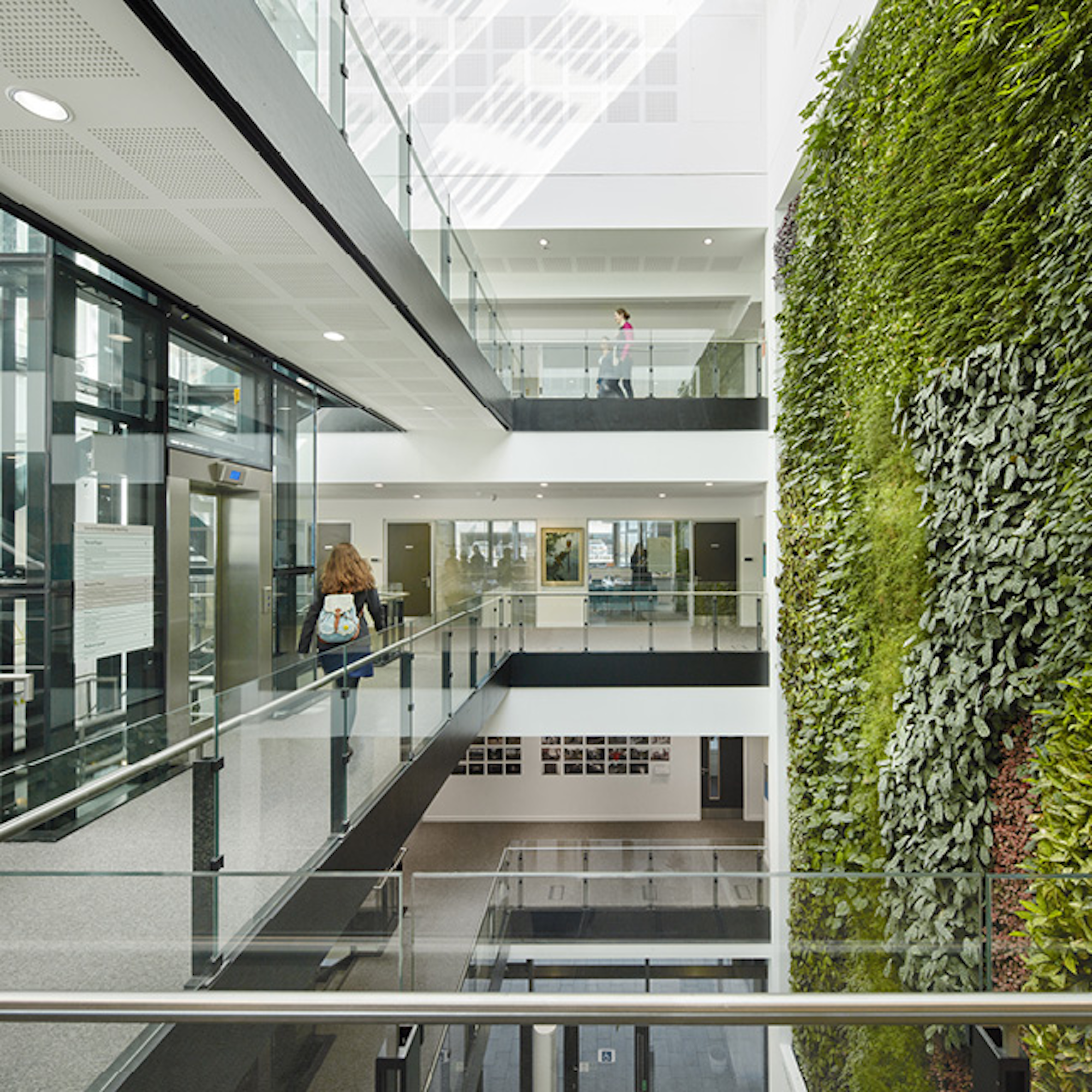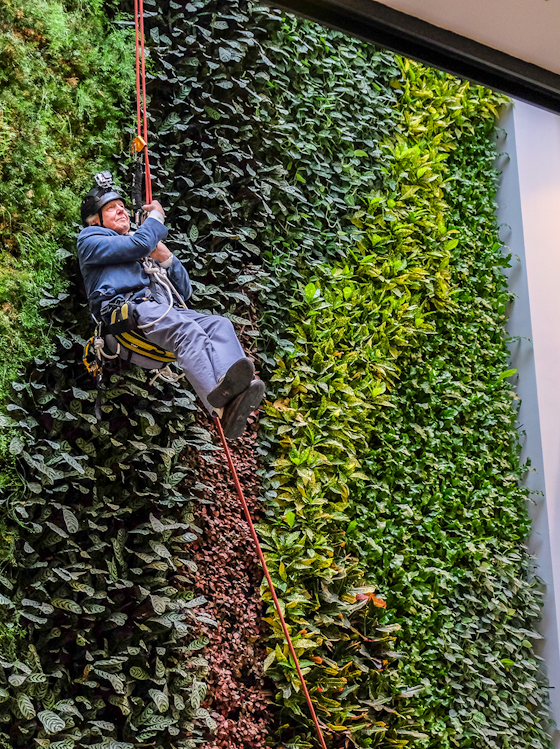Living Wall installation at the Sir David Attenborough building, Cambridge University
The original Arup Building at the University of Cambridge has recently seen a major refurbishment including the installation of an Viritopia living wall. Following its refurbishment, the building has been renamed the David Attenborough Building with the grand opening featuring Sir David Attenborough himself abseiling the 50ft wall. The building will now be used as the new global conservation hub.
Featured Solutions:
- Interior Living Wall
Size: 25m² - 150m²
Industry: Universities, Colleges & Schools
Project Drivers
Biophilia
Social Impact
Air Quality
